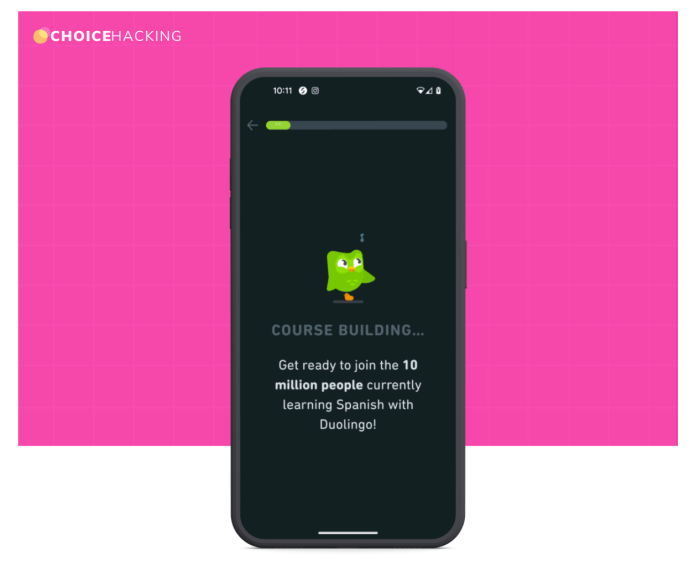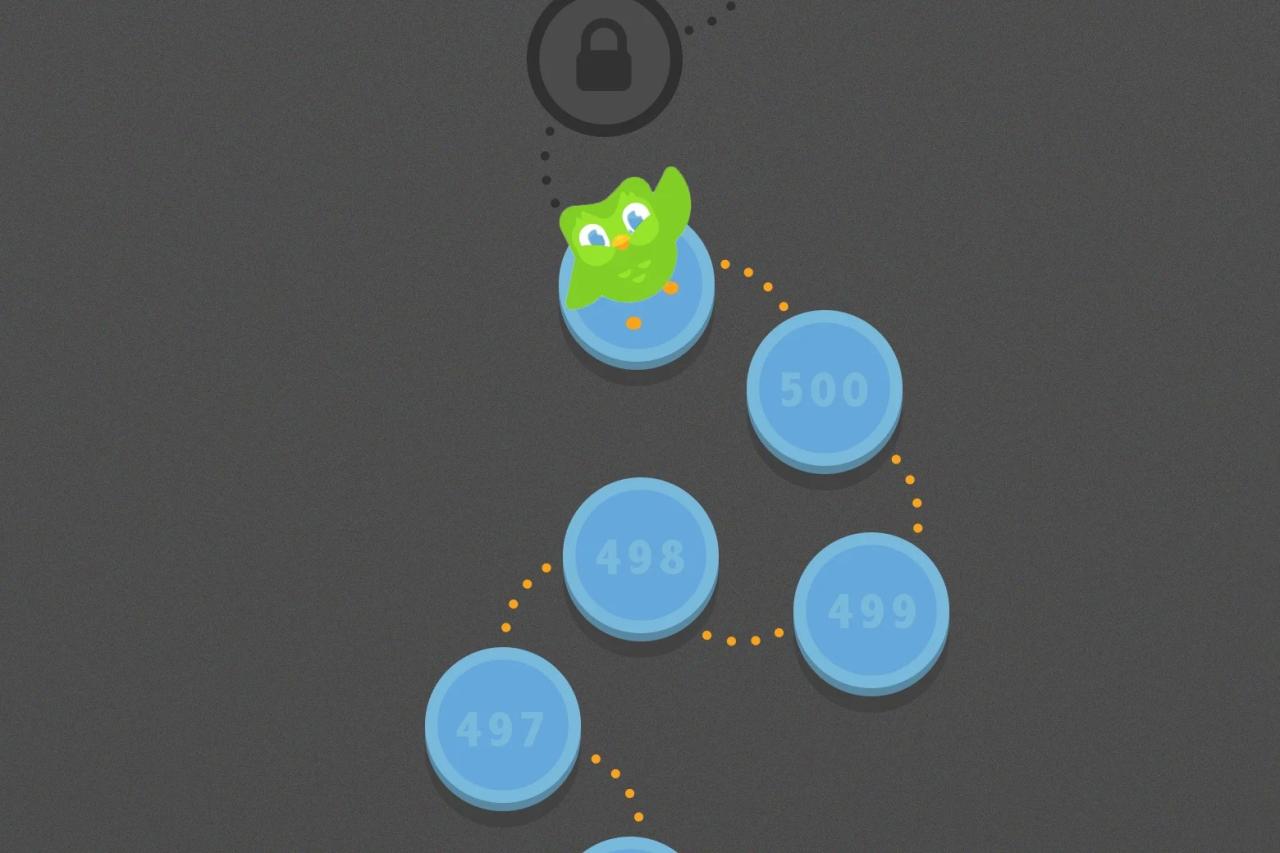Duolingo language learning anxiety is a common experience for many learners, and this post explores the reasons behind it. We’ll delve into the causes, effects, and management strategies for dealing with anxiety related to learning a language on Duolingo. This goes beyond the surface-level frustrations and dives into the psychological impact of the platform’s design and community on learners.
From the inherent pressure of gamification to the fear of social judgment, this post will unravel the complex interplay of factors that contribute to anxiety when using Duolingo. We’ll explore different types of anxieties, like performance anxiety and fear of failure, and examine how they manifest within the Duolingo learning environment.
Understanding the Phenomenon of Language Learning Anxiety
Language learning, while enriching, can often be accompanied by a range of anxieties. This anxiety isn’t simply about making mistakes; it’s a complex emotional response that can significantly impact the learning process. Understanding the nature of this anxiety is crucial for learners and educators alike to create a supportive and effective learning environment.Language learning anxiety, often referred to as “foreign language anxiety,” is a feeling of apprehension, worry, and self-consciousness experienced by individuals when engaging in language learning activities.
This anxiety manifests in various ways, from feelings of inadequacy to a fear of judgment. It’s a common experience, impacting learners across different platforms and levels of proficiency.
Nature of Language Learning Anxiety
Language learning anxiety is a multifaceted phenomenon stemming from a combination of cognitive, emotional, and social factors. It encompasses a range of negative emotions and thoughts related to language acquisition, including fear of failure, negative self-perception, and concerns about social interaction. Learners often anticipate negative evaluations from others or themselves, leading to avoidance of language use and hindering progress.
Common Sources and Triggers on Duolingo
Several factors on Duolingo, and language learning platforms in general, can contribute to anxiety. One common trigger is the pressure to achieve high scores and complete levels quickly. The gamified nature of Duolingo, while motivating for some, can create a sense of competition and performance anxiety for others. Furthermore, the visual and auditory cues, if not presented in a clear and supportive manner, may cause anxiety for learners.
A significant contributor to anxiety can be the difficulty level adjustments, if they are perceived as unfair or disproportionate to the learner’s capabilities. Finally, the potential for comparison with other users, especially those perceived as more advanced, can evoke feelings of inadequacy and anxiety.
Emotional and Psychological Impact
The emotional and psychological impact of language learning anxiety can be profound. Anxiety can manifest physically, leading to headaches, nausea, or difficulty concentrating. It can also affect learners’ motivation, leading to a decline in engagement and a reduced willingness to participate in learning activities. Prolonged anxiety can negatively impact self-esteem and confidence in one’s language abilities. In severe cases, it may lead to avoidance of language learning altogether.
The experience of anxiety can also lead to avoidance, resulting in stagnation and hindering the learning process.
Healthy vs. Unhealthy Levels of Anxiety
A moderate level of anxiety can actually be beneficial, acting as a motivator to strive for improvement. This “healthy anxiety” prompts learners to focus and prepare for tasks. However, when anxiety becomes excessive, it can become a significant barrier to learning, leading to avoidance and hindering progress. Recognizing the difference between healthy and unhealthy levels of anxiety is essential for effective language learning.
A healthy level of anxiety promotes focused preparation and engagement. Unhealthy levels lead to avoidance and hinder learning.
Comparison of Language Learning Platforms
| Platform | Anxiety-Inducing Features | Anxiety-Reducing Features |
|---|---|---|
| Duolingo | Gamified competition, pressure to achieve high scores, difficulty level adjustments, potential for social comparison | Clear and structured lessons, positive reinforcement, supportive community features, adjustable pace, personalized learning paths |
| Babbel | Pressure to complete lessons, potential for social comparison, lack of clear progression | Focus on real-life communication, diverse learning materials, interactive exercises |
| Memrise | Gamified competition, potential for social comparison, memorization-focused approach | Varied learning methods, diverse learning materials, personalized learning paths |
This table provides a basic comparison of various platforms. Each platform has its own set of strengths and weaknesses when it comes to triggering or mitigating anxiety. The key takeaway is that the learner’s experience is crucial in determining the level of anxiety experienced. The nature of the learning platform interacts with the learner’s personality and learning style to create the experience.
Manifestations of Language Learning Anxiety on Duolingo: Duolingo Language Learning Anxiety
Duolingo, a popular language learning platform, provides a unique environment where learners’ anxieties can manifest in various ways. Understanding these manifestations is crucial for creating a more supportive and effective learning experience. This exploration delves into the observable behaviors, patterns, and the specific anxieties that Duolingo users experience.Learners experiencing anxiety on Duolingo often exhibit subtle yet consistent behaviors.
These behaviors can be observed in their interactions, responses, and overall performance within the platform’s structure. From hesitation to outright avoidance, these patterns can significantly impact their progress and motivation. This analysis focuses on how anxiety presents itself on Duolingo and how it influences the user experience.
Ugh, Duolingo language learning anxiety is real. Sometimes, I just want to throw my phone across the room. But hey, maybe a new gadget could help me conquer this! Check out this deal on a Microsoft Surface Pro 7 for as little as $600 at Woot get the microsoft surface pro 7 for as little as 600 at woot.
A distraction-free learning environment might just be the key to finally mastering those French verbs. Still, I’m pretty sure the anxiety will linger. Maybe I should just stick to Duolingo for now.
Observable Behaviors and Patterns, Duolingo language learning anxiety
Anxiety on Duolingo can manifest in a range of behaviors, from subtle hesitations to outright avoidance of specific exercises or interactions. Learners might exhibit prolonged pauses before responding to questions, a heightened sensitivity to feedback, or a tendency to focus on errors rather than progress. This is often a consequence of fear of judgment or making mistakes in front of others.
Manifestations in Learner Interactions
Learners experiencing anxiety often exhibit specific patterns in their interactions on the platform. For instance, they may avoid participating in group discussions or forums, preferring to remain in the background. They might also respond less frequently to prompts, or avoid completing tasks altogether, leading to a lower engagement rate. Similarly, anxious learners may display a defensive reaction to feedback, potentially perceiving it as criticism rather than constructive guidance.
Manifestations in Learner Responses and Performance
Anxiety’s impact on learner responses and performance is notable. Learners may struggle with tasks that involve speaking or writing in the target language, or demonstrate a lack of confidence in their abilities. They might make more errors than usual, or their responses may show signs of hesitation, self-doubt, or a tendency to overthink. This often results in a noticeable decrease in accuracy and fluency.
Common Challenges Faced by Anxious Learners
| Challenge | Examples |
|---|---|
| Hesitation and Procrastination | Taking longer than usual to respond, delaying completion of lessons, or avoiding challenging exercises. |
| Difficulty with Feedback | Perceiving feedback as criticism rather than guidance, becoming defensive, or avoiding lessons that involve feedback. |
| Social Pressure and Comparison | Avoiding group activities or forums, comparing their progress to others, or feeling judged by other users. |
| Fear of Failure | Avoiding challenging exercises or lessons, focusing on potential errors, or setting unrealistic expectations. |
| Lack of Confidence | Struggling with speaking or writing tasks, exhibiting self-doubt, or undervaluing their progress. |
Social Pressure and Comparisons
Social pressure plays a significant role in fostering anxiety on Duolingo. The platform’s structure, including public leaderboards and community forums, can create a competitive environment where learners may feel pressured to perform at a high level or compare their progress to others. This competitive environment, if not managed carefully, can amplify existing anxieties or create new ones for learners.
Comparisons with other learners can often trigger feelings of inadequacy and insecurity.
Types of Anxiety Affecting Duolingo Users
Different types of anxiety can affect Duolingo users. Performance anxiety manifests as a fear of performing poorly in front of others or in the context of the platform. Social anxiety involves a fear of judgment or criticism from other users. Fear of failure manifests as a reluctance to attempt challenging tasks or engage in activities that may lead to errors.
Each type of anxiety impacts learners’ behavior and engagement with the platform in distinct ways.
Strategies for Managing Anxiety in Duolingo

Learning a new language can be incredibly rewarding, but for some, the process can be tinged with anxiety. Duolingo, with its gamified approach, presents unique challenges and opportunities for managing this anxiety. Understanding the specific triggers and manifestations of anxiety on Duolingo is the first step towards effectively addressing them. This section focuses on practical strategies learners can implement to navigate the platform with greater ease and enjoyment.Effectively managing anxiety on Duolingo involves recognizing triggers, developing coping mechanisms, and fostering a positive learning environment.
Ugh, Duolingo language learning anxiety is real. It’s like battling a tiny, digital dragon every time I open the app. But hey, maybe some of that stress could be alleviated by checking out what YouTube is testing with its premium subscription. They’re reportedly testing multiple new experimental features, like interactive learning tools, youtube premium test multiple new experimental features which might actually make language learning more fun.
Still, Duolingo’s got a long way to go to conquer my inner language-learning-monster!
By actively engaging in these strategies, learners can transform their experience from one of apprehension to one of accomplishment and progress. Crucially, this proactive approach empowers learners to overcome anxiety and maximize their language learning potential.
Identifying and Addressing Specific Triggers
Many anxiety triggers on Duolingo stem from the desire to perform well, fear of making mistakes, and the pressure to progress quickly. Understanding these underlying anxieties is key to developing effective coping mechanisms. Learners should consciously reflect on situations where they experience heightened anxiety, noting specific exercises, topics, or even the time of day. This self-awareness allows them to tailor their approach and anticipate potential stressors.
Developing Coping Mechanisms
Strategies for managing anxiety during Duolingo sessions should be personalized. This involves experimenting with various techniques to identify what works best for each individual.
- Time Management and Realistic Goals: Setting realistic daily goals and adhering to a consistent learning schedule can significantly reduce pressure. Breaking down larger tasks into smaller, manageable chunks allows learners to feel a sense of accomplishment and avoids overwhelming themselves. This is a key aspect of managing the gamified pressure that Duolingo can exert.
- Positive Self-Talk and Affirmations: Replacing negative thoughts with positive affirmations can shift the mindset. Instead of dwelling on mistakes, learners can focus on progress and celebrate small victories. For example, reminding oneself that “I am learning, and that’s enough” can be a powerful tool.
- Mindfulness and Deep Breathing: Practicing mindfulness techniques, such as deep breathing exercises, can help manage stress responses. These techniques can be integrated into the learning routine, providing moments of calm and focus.
- Seeking Support and Connection: Joining language learning communities or online forums can provide a supportive environment. Sharing experiences and strategies with peers can foster a sense of belonging and camaraderie, mitigating feelings of isolation.
Practical Steps to Overcome Anxiety-Inducing Situations
Specific anxiety-inducing situations on Duolingo, like timed quizzes or complex grammar exercises, require targeted strategies.
- Breaking Down Complex Tasks: Complex grammar exercises can be broken down into smaller, more manageable parts. Understanding the underlying concepts step-by-step helps build confidence and reduces the overall anxiety associated with the task.
- Using the “Hints” Feature Strategically: The “hints” feature on Duolingo should not be viewed as a crutch, but as a tool for understanding. Learners can use it to gain insights and clarify their understanding of the material, thereby reducing anxiety about getting the answer immediately.
- Adjusting the Learning Pace: If a particular exercise or topic is proving particularly challenging, learners should not hesitate to adjust their pace or revisit the material. Learning at one’s own speed fosters a more relaxed and enjoyable experience.
Fostering a Positive Learning Environment
Creating a positive learning environment on Duolingo is vital for managing anxiety. This involves adopting a growth mindset and focusing on progress, not perfection.
- Setting Realistic Expectations: Understanding that language learning takes time and effort is crucial for managing expectations. Avoid comparing oneself to others and focus on personal progress.
- Celebrating Small Victories: Acknowledging and celebrating small milestones in language learning, like mastering a new vocabulary item or successfully completing a challenging exercise, boosts confidence and motivation.
- Building a Supportive Learning Routine: Integrating language learning into a broader routine, like pairing it with other enjoyable activities, can help reduce the perceived pressure associated with the task.
Comparison of Anxiety Management Across Platforms
Different language learning platforms offer varying levels of support for learners dealing with anxiety. Duolingo, with its gamified approach, presents unique challenges but also offers opportunities for learners to develop self-regulation skills. Comparison with other platforms reveals different strengths and weaknesses in terms of anxiety management tools and strategies.
Practical Tools and Resources
| Tool/Resource | Description | How to Use |
|---|---|---|
| Duolingo’s built-in feedback mechanisms | Provides immediate feedback on answers | Use the feedback to understand mistakes and correct them. |
| Language learning communities | Provides support and encouragement from peers | Engage in discussions, share experiences, and offer help. |
| Mindfulness apps | Offers guided meditations and breathing exercises | Use during stressful periods or before starting a Duolingo session. |
Impact of Duolingo’s Design on Anxiety
Duolingo, a popular language learning platform, offers a user-friendly interface and gamified approach. However, its design choices can inadvertently contribute to anxiety in some learners. This analysis delves into specific design elements that might trigger feelings of inadequacy or pressure, and explores strategies to mitigate these effects. Understanding the potential impact of design on user experience is crucial for creating a more inclusive and supportive learning environment.The effectiveness of language learning platforms hinges on factors beyond just the curriculum.
Design elements, including pacing, feedback mechanisms, and the very structure of the learning experience, play a significant role in how learners perceive the process. By analyzing these elements, we can identify potential sources of anxiety and implement changes that foster a more positive and less intimidating learning environment.
Gamification and Competition
Duolingo’s gamified approach, with its points, levels, and badges, can be motivating for some learners. However, for others, the competitive aspects can create unnecessary pressure and stress. The constant comparison with other users, leaderboard rankings, and the focus on completing tasks within a set timeframe can contribute to anxiety, especially for learners who are not accustomed to a highly competitive learning environment.
This emphasis on progress and ranking can overshadow the actual learning process, making it feel more like a game than a personal journey of language acquisition. The need for constant achievement can trigger feelings of inadequacy if the learner does not experience immediate success.
Duolingo’s Pacing and Feedback
The structured pacing of Duolingo lessons can be another source of anxiety for learners. The predetermined progression, with its associated time constraints, can create a sense of pressure to keep up. This pressure to consistently perform well can lead to anxiety and potentially hinder the learning process. Learners may feel overwhelmed if they cannot maintain the pace or struggle with a particular concept, leading to frustration and a negative learning experience.
Comparison to Other Platforms
Compared to other language learning platforms, Duolingo often emphasizes rapid progress and immediate feedback, potentially leading to higher anxiety for some learners. Platforms that prioritize a more gradual, personalized approach might be better suited for learners with anxieties about language learning. The focus on completion and immediate results may not be optimal for learners who prefer a slower, more in-depth approach to language acquisition.
Learning languages is a complex process and shouldn’t be treated as a race.
Adjusting the Interface for Reduced Anxiety
Several design adjustments could reduce anxiety on Duolingo. Introducing a wider range of learning paths, with options for personalized pacing, could cater to various learning styles and preferences. Reducing the emphasis on competition and providing more nuanced feedback mechanisms would also be beneficial. More flexible timing for completing lessons and reducing the visible comparison with other users could foster a less pressured learning environment.
Creating more opportunities for learners to engage with the language organically, beyond structured exercises, would contribute to a more relaxed learning atmosphere.
Table: Duolingo Design Elements and Potential Anxiety Impact
| Design Element | Potential Impact on Anxiety |
|---|---|
| Gamification (points, levels, badges) | Can create pressure to achieve, fostering feelings of inadequacy if not immediately successful. |
| Structured pacing and time constraints | May overwhelm learners, leading to feelings of pressure and anxiety. |
| Emphasis on immediate feedback | Can be stressful for learners struggling with concepts; may not allow for sufficient processing time. |
| Leaderboard and comparison with other users | Potentially increases pressure and feelings of inadequacy. |
| Limited flexibility in learning paths | May not cater to diverse learning styles and preferences, leading to frustration. |
Addressing Anxiety in Duolingo’s Community

Duolingo’s vibrant community, while a powerful tool for language learning, can also inadvertently contribute to anxiety for some users. The constant interaction, exposure to varying skill levels, and the pressure to perform can be overwhelming for learners. Understanding how the community functions and how to foster a more supportive environment is crucial for enhancing the overall learning experience.The Duolingo community’s role in language learning anxiety is complex.
While positive interactions can be incredibly motivating and encouraging, negative experiences can be detrimental. Learners’ perceptions of their abilities and progress, heavily influenced by online interactions and feedback, are significantly impacted by the community dynamic. Cultivating a space where learners feel supported and encouraged, rather than judged or pressured, is essential.
The Role of Positive Community Interactions
Positive interactions within the Duolingo community can significantly mitigate language learning anxiety. Encouragement, constructive feedback, and a welcoming atmosphere can foster a sense of belonging and confidence. Learners who feel supported and understood are more likely to persist in their language learning journey. This supportive environment helps learners feel empowered to take risks and make mistakes without fear of negative repercussions.
- Sharing Resources and Tips: Learners can share helpful resources, study strategies, and language learning tips, creating a wealth of knowledge that benefits everyone. This shared knowledge can be particularly useful for learners experiencing anxiety. For instance, if someone is struggling with a specific grammar point, a supportive community member might provide a clear explanation or suggest a helpful online tool.
- Offering Encouragement and Support: A simple “well done!” or “keep up the great work!” can make a significant difference in a learner’s confidence. This simple act of acknowledgment validates their efforts and helps them feel less isolated in their learning process. Furthermore, encouraging learners to celebrate small victories, rather than focusing solely on perfection, can be a powerful antidote to anxiety.
- Creating Study Groups and Communities: Dedicated spaces for learners to connect, share experiences, and motivate each other can be incredibly valuable. Such groups can provide a sense of community and accountability, helping learners stay on track and avoid feeling overwhelmed.
Impact of Online Interactions and Feedback
Online interactions and feedback play a pivotal role in shaping learners’ perceptions of their progress and abilities. Constructive criticism and supportive comments can significantly boost confidence, while negative or harsh feedback can lead to anxiety and discouragement. Therefore, cultivating a culture of constructive engagement is essential.
- Constructive Feedback: Focusing on specific areas for improvement rather than general criticisms is key. Providing clear, concise, and actionable feedback helps learners understand how to better their language skills and builds confidence.
- Avoiding Harsh or Judgmental Comments: Critiques that are personal, demeaning, or overly critical can damage a learner’s self-esteem and motivation. A more empathetic and supportive approach can lead to a much more positive learning experience.
Promoting a Supportive Environment
A supportive environment on Duolingo fosters a positive learning experience and reduces anxiety. Learners who feel understood and accepted are more likely to persist in their language learning journey.
Ugh, Duolingo language learning anxiety is real, isn’t it? Trying to master new vocabulary and grammar can feel overwhelming. But hey, maybe focusing on some of the cool tech advancements like the Android 15 beta 2.2 private spaces NFC fixes here could actually help. Those kinds of improvements might actually ease my own Duolingo-related stress, by offering a more secure and organized learning environment! So, maybe the solution is a little more tech-focused than I thought.
| Method | Description | Example |
|---|---|---|
| Establish clear community guidelines | Explicitly outlining expectations for respectful and constructive interaction. | “Be mindful of others’ learning levels and avoid overly critical comments.” |
| Highlight successful learning stories | Sharing positive learning experiences can inspire and motivate others. | “Read testimonials from learners who overcame similar challenges.” |
| Moderation of discussions | Actively monitoring and guiding interactions to ensure a positive environment. | “Removing or addressing any comments that are overly negative or disrespectful.” |
| Creating specific channels for feedback | Dedicated spaces for constructive feedback and suggestions. | “A separate forum or dedicated chat room for providing language-specific feedback.” |
The Potential for Negative Interactions
Negative interactions, such as bullying, trolling, or discouraging comments, can significantly exacerbate anxiety and discourage learners. This can lead to a negative spiral, where learners become hesitant to participate and withdraw from the community. Creating a positive and inclusive environment is crucial for the success and well-being of all learners.
Addressing Learning Styles and Anxiety
Learning a new language is a multifaceted endeavor, demanding dedication and patience. Beyond the inherent challenges of grammar and vocabulary, the learning process itself can be influenced by individual preferences and styles. Understanding these styles and how they interact with language learning platforms like Duolingo can significantly impact a learner’s experience and ultimately, their anxiety levels. This exploration delves into the relationship between learning styles and anxiety on Duolingo, offering insights into how to tailor the platform for diverse needs.Learning styles, essentially the ways individuals prefer to absorb and process information, play a pivotal role in the effectiveness and enjoyment of language learning.
Some learners thrive on visual cues, others benefit from hands-on activities, and still others find auditory input most engaging. Duolingo, while offering various interactive elements, might not fully accommodate all these styles, potentially leading to anxiety for learners whose preferred methods aren’t adequately represented.
Impact of Visual Learning Styles on Duolingo
Visual learners often benefit from clear, concise visual representations of information. Duolingo, primarily a platform utilizing text and simple images, can be somewhat limiting for this learning style. Flashcards, visual aids, and more comprehensive diagrams could enhance the experience. For example, a visual learner might find it easier to grasp grammatical concepts if presented alongside illustrative examples, such as images depicting different sentence structures.
Impact of Auditory Learning Styles on Duolingo
Auditory learners thrive on listening and speaking. Duolingo incorporates audio elements, but they might not be sufficiently emphasized or integrated into the platform’s core structure for all learners. More opportunities for listening exercises, interactive dialogues, and pronunciation guides could greatly benefit this group. Imagine a learner who benefits greatly from listening to native speakers, Duolingo could offer more practice in this area to cater to this style.
Impact of Kinesthetic Learning Styles on Duolingo
Kinesthetic learners, preferring hands-on activities and physical engagement, might find Duolingo’s primarily screen-based format less engaging. While Duolingo offers interactive exercises, the lack of tangible components can be a barrier. Integrating physical activities, such as role-playing games or physical flashcards, could improve the experience. For example, a kinesthetic learner might find it easier to remember vocabulary if they write it down or use physical flashcards.
Learning Style Preferences and Anxiety
Different learning styles can either exacerbate or mitigate anxiety levels on Duolingo. Learners whose preferred styles are not adequately catered to by the platform might experience frustration and anxiety, whereas those whose learning style aligns with Duolingo’s approach might find the experience more seamless and less stressful.
Table: Learning Styles and Duolingo
| Learning Style | Duolingo Features | Impact on Anxiety | Adaptation Suggestions |
|---|---|---|---|
| Visual | Text-based exercises, simple images | Potentially high, due to limited visual aids | Incorporate more diagrams, flashcards, and visual examples |
| Auditory | Audio pronunciation, limited dialogue | Moderate, due to limited auditory exercises | Offer more listening exercises, interactive dialogues, and pronunciation guides |
| Kinesthetic | Interactive exercises, but primarily screen-based | Potentially high, due to lack of physical engagement | Integrate physical activities, role-playing, or physical flashcards |
Tailoring Language Learning Experiences
To reduce anxiety associated with learning styles, Duolingo could offer personalized learning paths based on user preferences. For instance, users could specify their preferred learning style, allowing the platform to recommend content and exercises tailored to their needs. By incorporating these preferences, Duolingo could create a more supportive and effective learning environment, potentially mitigating anxiety and promoting language acquisition.
Closure
In conclusion, Duolingo language learning anxiety is a multifaceted issue stemming from a combination of platform design, social dynamics, and individual learning styles. Understanding the triggers and manifestations of this anxiety is crucial for both learners and Duolingo itself. By adopting strategies for managing anxiety, fostering a supportive community, and adapting the platform to accommodate diverse learning styles, Duolingo can significantly improve the language learning experience for everyone.
The key takeaway is that while Duolingo offers great tools, a mindful approach to learning is essential to harnessing its full potential without succumbing to anxiety.




